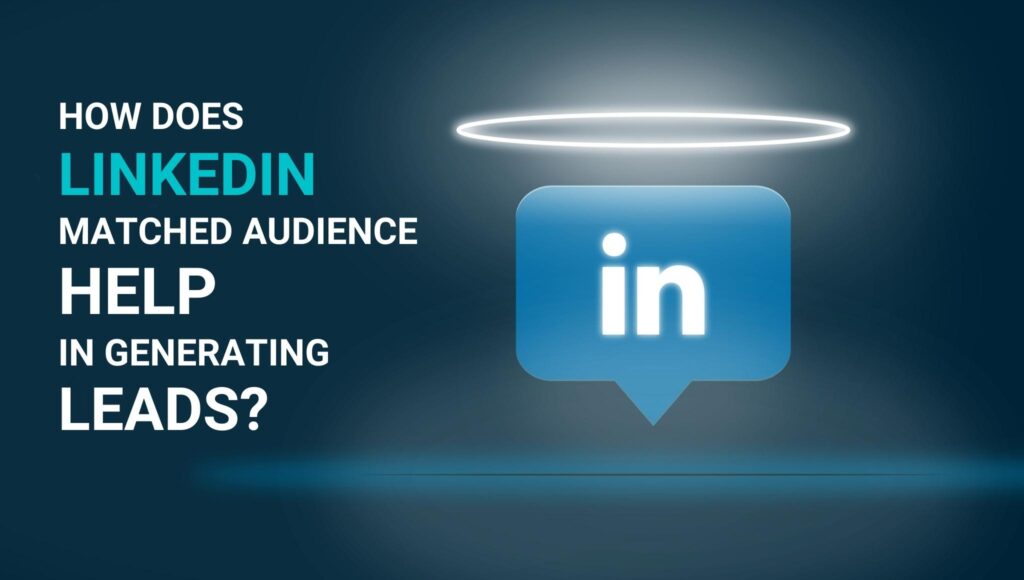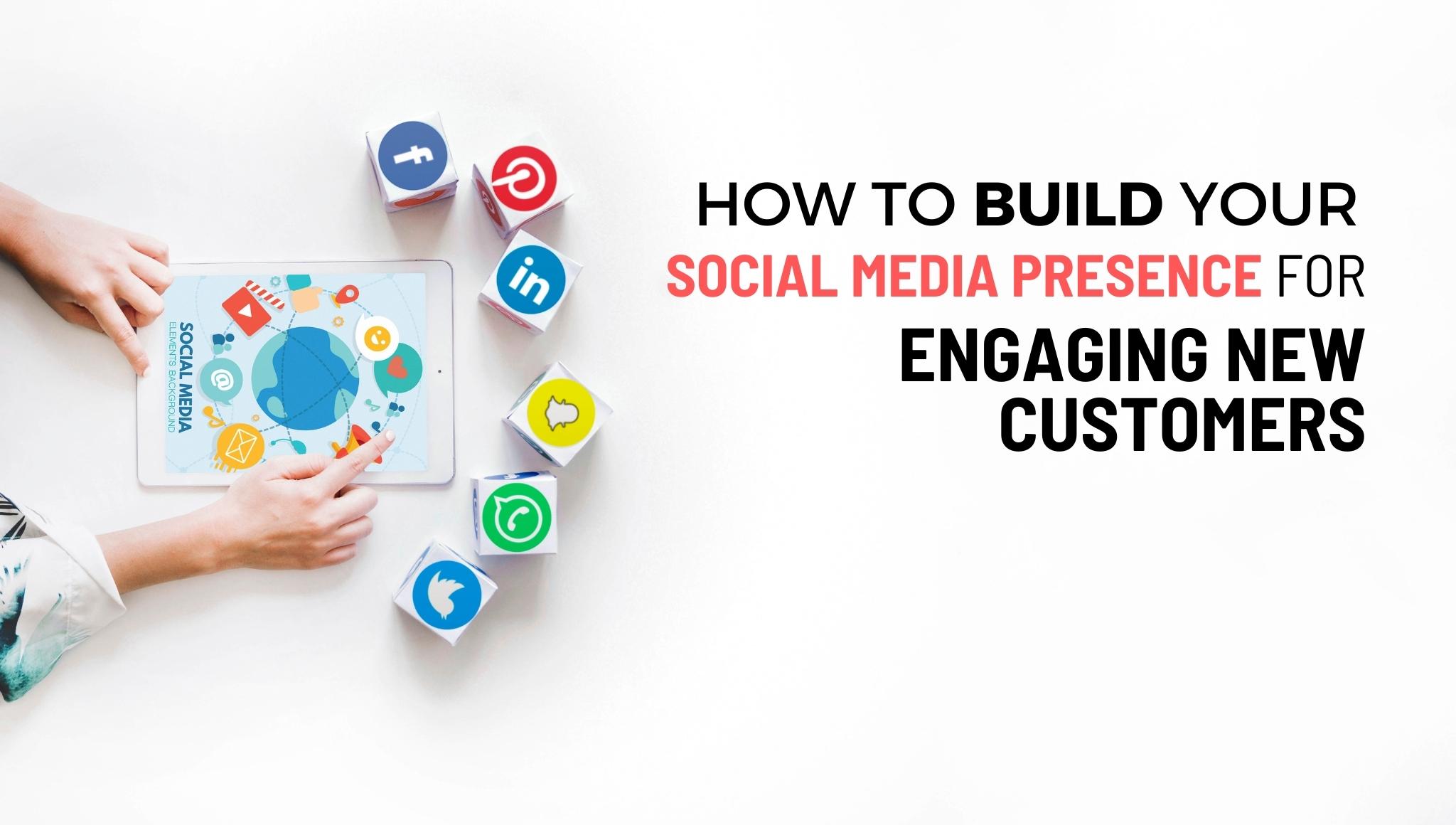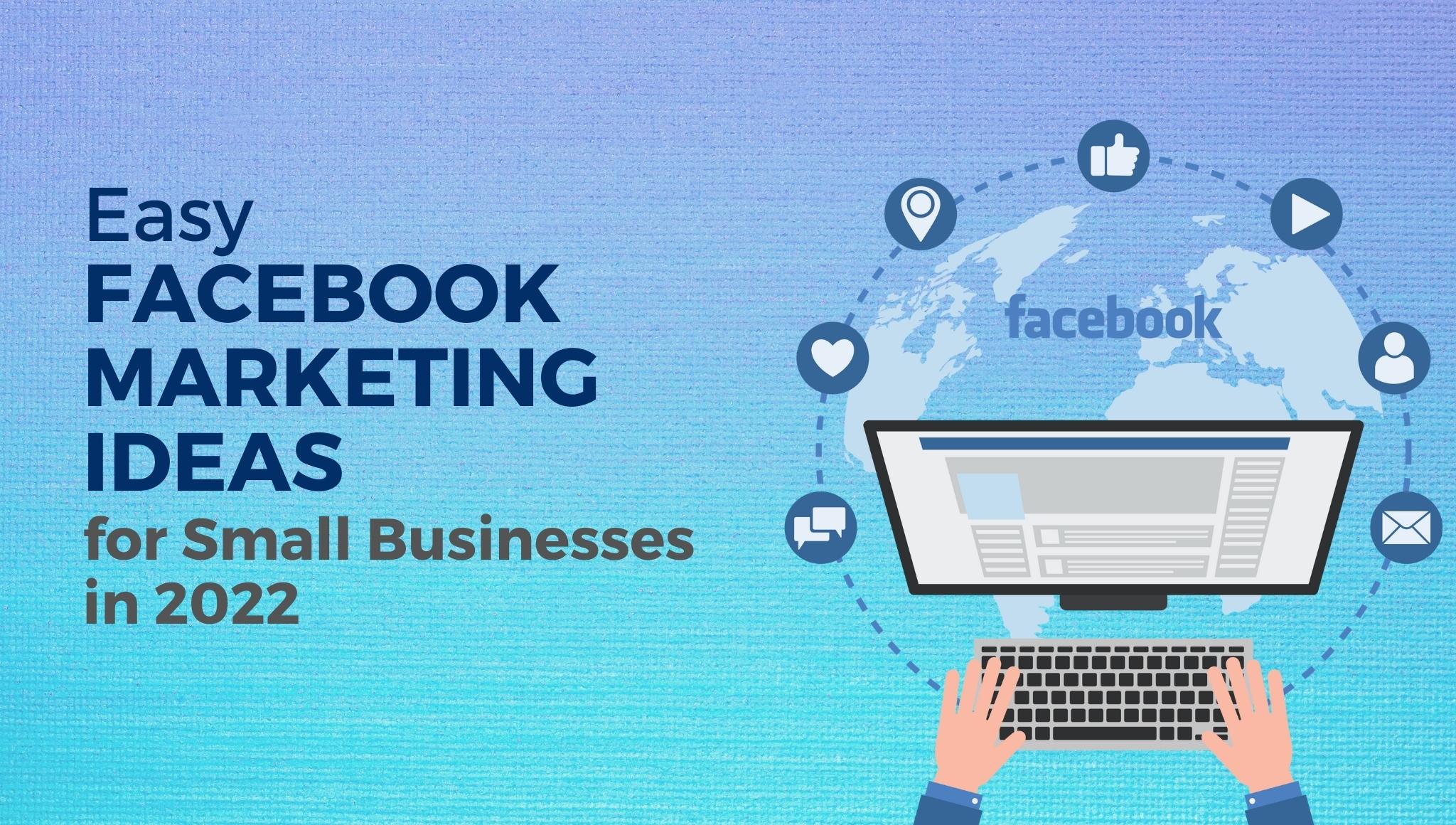Today, LinkedIn Marketing Solutions provides a convenient and unique way to target members by Company, Industry, Skills, Titles, Categories, and more; but what if you want to reach the people you already know? If you want to generate or nurture warm leads, customizing your ad targeting can help in your lead generation process which allows you to reach people who matter most to your business. Lead generation is an expensive process whether you run ad campaigns on social media platforms or buy lead data from third-party companies.
LinkedIn’s Matched Audience provides a set of target options to combine your business data with LinkedIn’s professional data. It helps you to convert hard-to-get and highly-valued leads into customers, which you may not have reached otherwise.
For many people, the matched audience on LinkedIn is a completely new topic so, in this article, we’re going to explain everything you need to learn about LinkedIn lead generation strategies.
TABLE OF CONTENTS
-
- What are LinkedIn matched audiences?
- What are the types of LinkedIn matched audiences?
- Best ad targeting practices for strong lead generation
- How to analyze your campaign performance?
What is LinkedIn Matched Audience?
Matched audiences on LinkedIn are the same as the custom audiences on Facebook. It finds out people who are already interested in your products or services. Matched audience allows more specific reach to the users. It is a set of tools used to connect businesses with their target audiences by leveraging the potential of their contacts in the database. It helps you to re-impact users who have interacted with your business earlier and provides better lead generation.
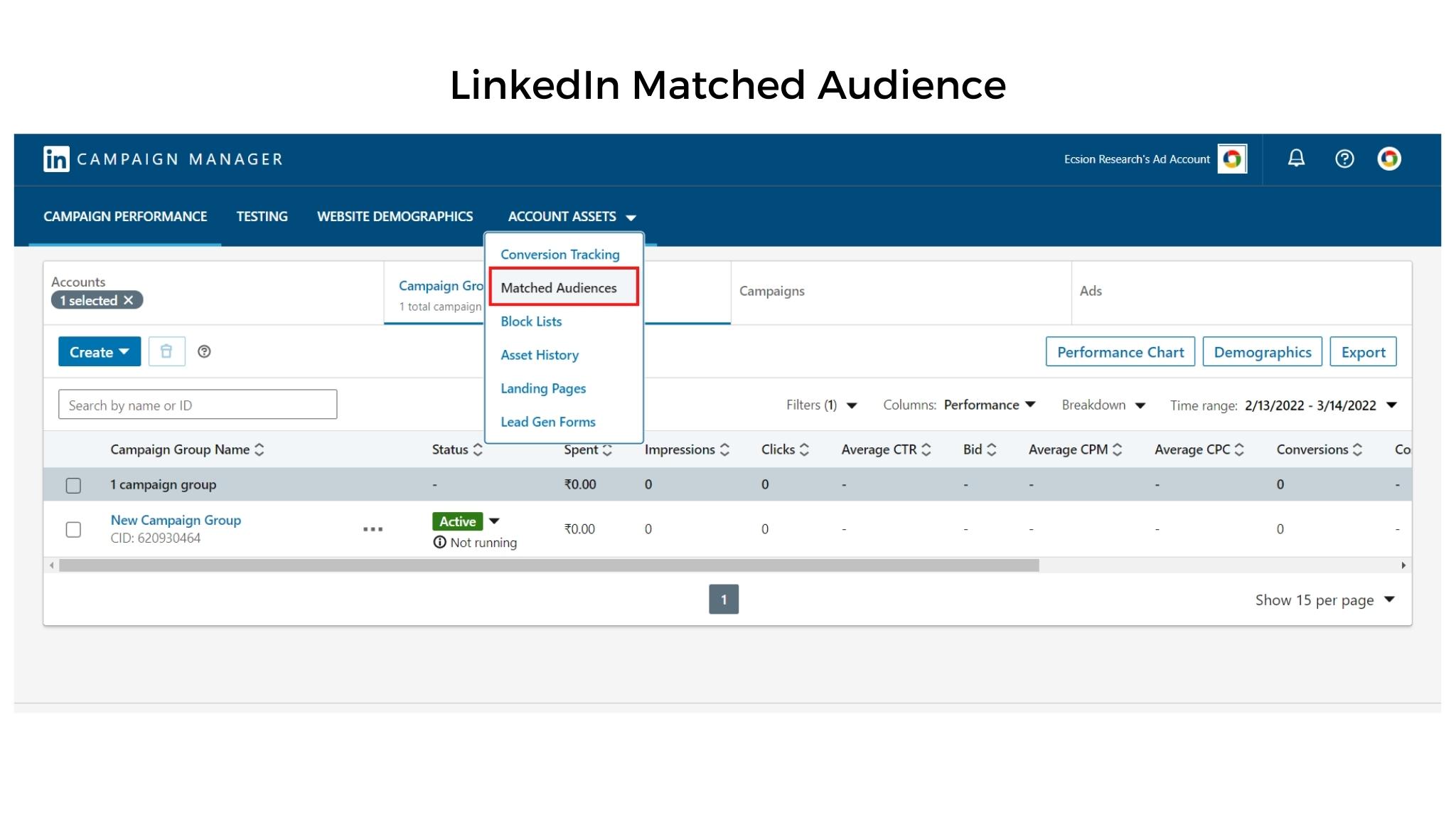
Lead generation is essential for B2B businesses, but it is not just a number game. To get better results you need to focus on getting the right quality of leads. Quantity with no desired outcome is of no use.
To get started with matched audiences keep your conversion tracking enabled. It will allow you to measure the actions of the users who are coming to your website through LinkedIn ads or campaigns. The key actions can be a content download, page views, signing up through a lead gen form, etc.
Matched Audiences helps you to retarget website visitors, upload a list of accounts (companies), or email contacts to your target business. With this offering, LinkedIn becomes an ideally advanced lead generation strategy for always-on campaigns. It helps you to build a richer lead generation marketing plan to increase ROI and business revenue.
What are the types of LinkedIn matched audiences?
LinkedIn’s matched audience concept helps businesses to reach website visitors and retarget them by utilizing LinkedIn ads as they browse the internet. Matched audiences include parameters such as retargeting, Contact targeting, Company or Account targeting, and Lookalike targeting. With these parameters, businesses can perform 10 times better than usual.
Let us see how this works…
- Retargeting
Retargeting or Website retargeting helps you to deliver relevant ad content to the audiences based on visits to your website page or action taken by the users with your LinkedIn ads.
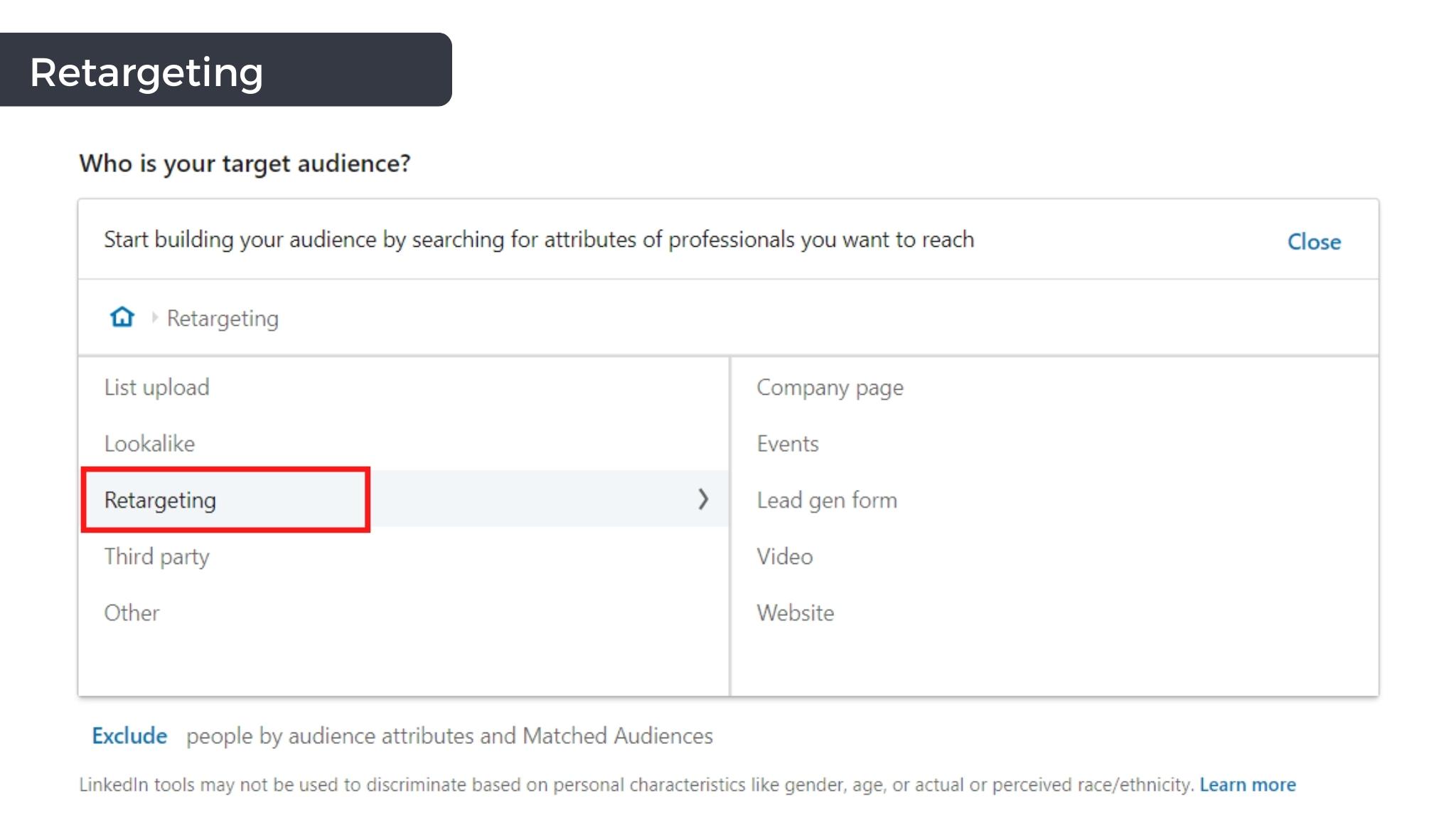
Now let me simplify this to make it more understandable for newbies.
How does retargeting work on LinkedIn?
It is a simple 7-step process:
- People see LinkedIn ads in their LinkedIn feed.
- They click on that ad.
- They land on your website page.
- They interact in some way, perhaps by downloading content or submitting a lead gen form, viewing video ads, or just by visiting your website page.
- They become a lead in your system.
- Their history is stored in your cookies and the data is delivered to LinkedIn.
- Retargeting ads are shown to these users.
With all these efforts you can hope for the potential 8th step where the leads take a step forward to become your customers.
Now, the next question popping up is …
How to set up a retargeting campaign on LinkedIn?
It is simple…
If you are retargeting visitors to your company website, LinkedIn Insight Tags (javascript code) can be used to track conversions, retarget, and find real-time insights on the content preferences of your website. You need to incorporate LinkedIn Insight Tags on your website’s page to enable this feature.
Create an audience to retarget by website, video ads, Lead Gen Forms, or a LinkedIn event. (Each type of matched audience needs to generate at least 300 people before ads can be delivered to that audience)
Share a copy of your matched audiences across any of your ad accounts.
Let your audience build, which will take nearly 48 hours. Your audience will continue to grow as more LinkedIn members engage with your ads. Once the audience is built, you can add it to a campaign using ad format.
View the status of audiences synced from your data management platform.
Utilize the A/B test to check the performance of your LinkedIn ad campaigns to discover which ad campaign is performing better and which is not.
- Contact targeting
It helps you to market to prospective customers and known contacts by securely uploading your very own list of email addresses to match against LinkedIn members.
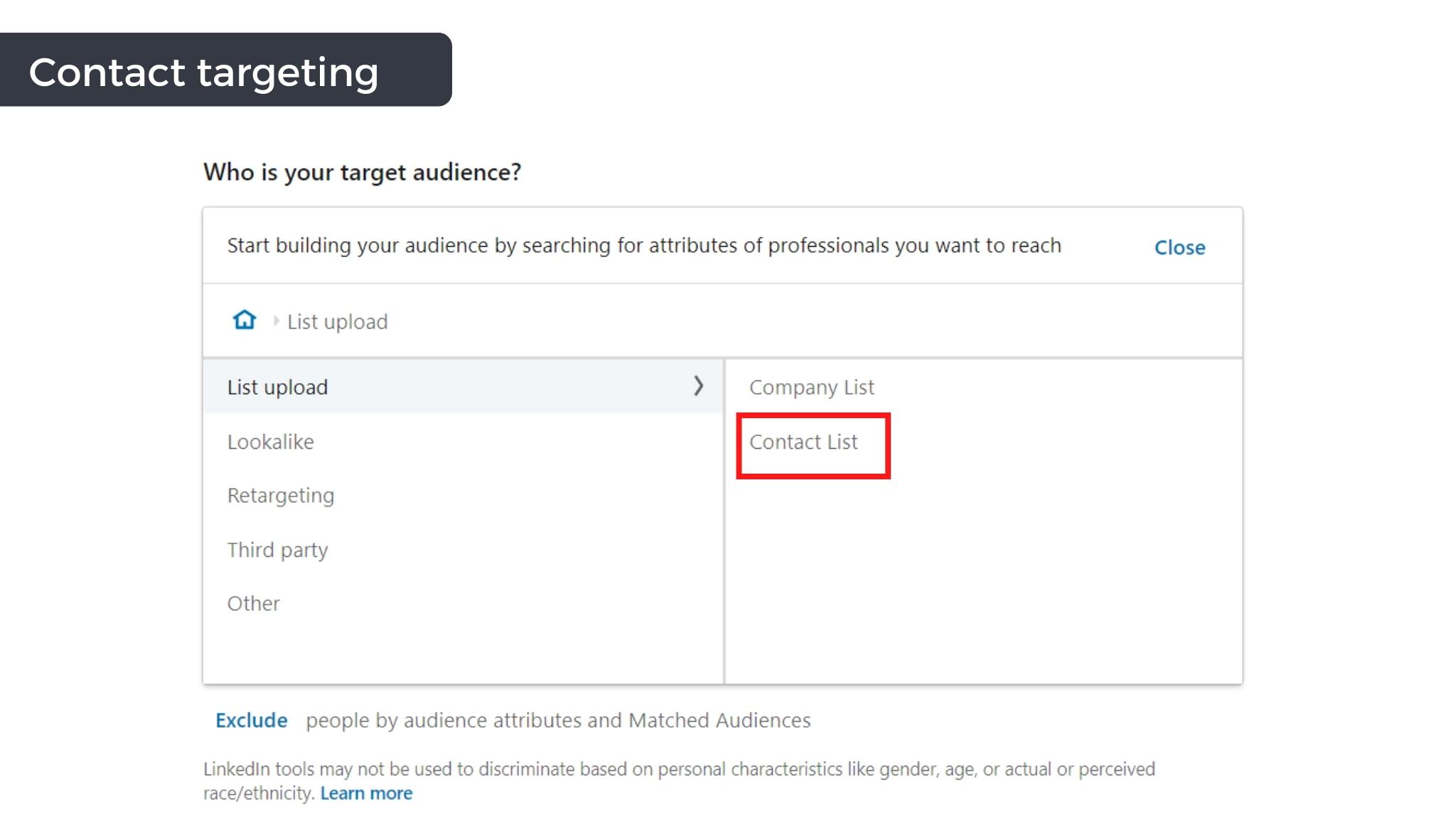
You can get started by a CSV upload or by the data integration process.
The LinkedIn algorithm will scan the list of email addresses and search within its own database to see if any email address coincides. If at all any email coincides then that user has used the exact same email to register on your website as well as on the LinkedIn account. Only in such cases, LinkedIn can find a match and you can re-impact those users on social media channels.
Here are some pointers to keep in mind when it comes to contact targeting.
-
- Deliver highly relevant ads to the leads.
- Consider uploading a larger list of contacts for better results.
- When selecting your contacts target top influencers.
- Divide your contacts into customized audience segments such as current clients, prospects (members regarded as potential customers), and churned customers (customers which stopped using the company’s services)
There are two ways to get started with contacts targeting:
-
-
- Contact targeting by uploading emails
-
-
-
- Upload a list of contacts as per LinkedIn guidelines
- In the campaign manager find the account assets menu and click ‘matched audience’ from the drop-down list.
- Create an audience and then upload the list
- Finish the setup process by adding your file of matched audiences to a new or existing campaign.
-
-
-
- Contact targeting by data integrations
-
-
-
- To get started you need to have access to the creative manager on your campaign manager account to integrate with a data integration provider.
- Select your data integration partner for LinkedIn ads. The next step is completed within your data integration partners’ system.
- Your list will automatically populate on the ‘uploaded lists’ page of the matched audience tab.
-
This is how you upload or integrate your contact lists and add them to an existing or a new campaign.
- Account targeting
Account targeting is also known as company targeting helps you to target specific companies that are on your target list. It allows you to reach decision-makers to your target accounts (companies), by adding target company names to your campaign.
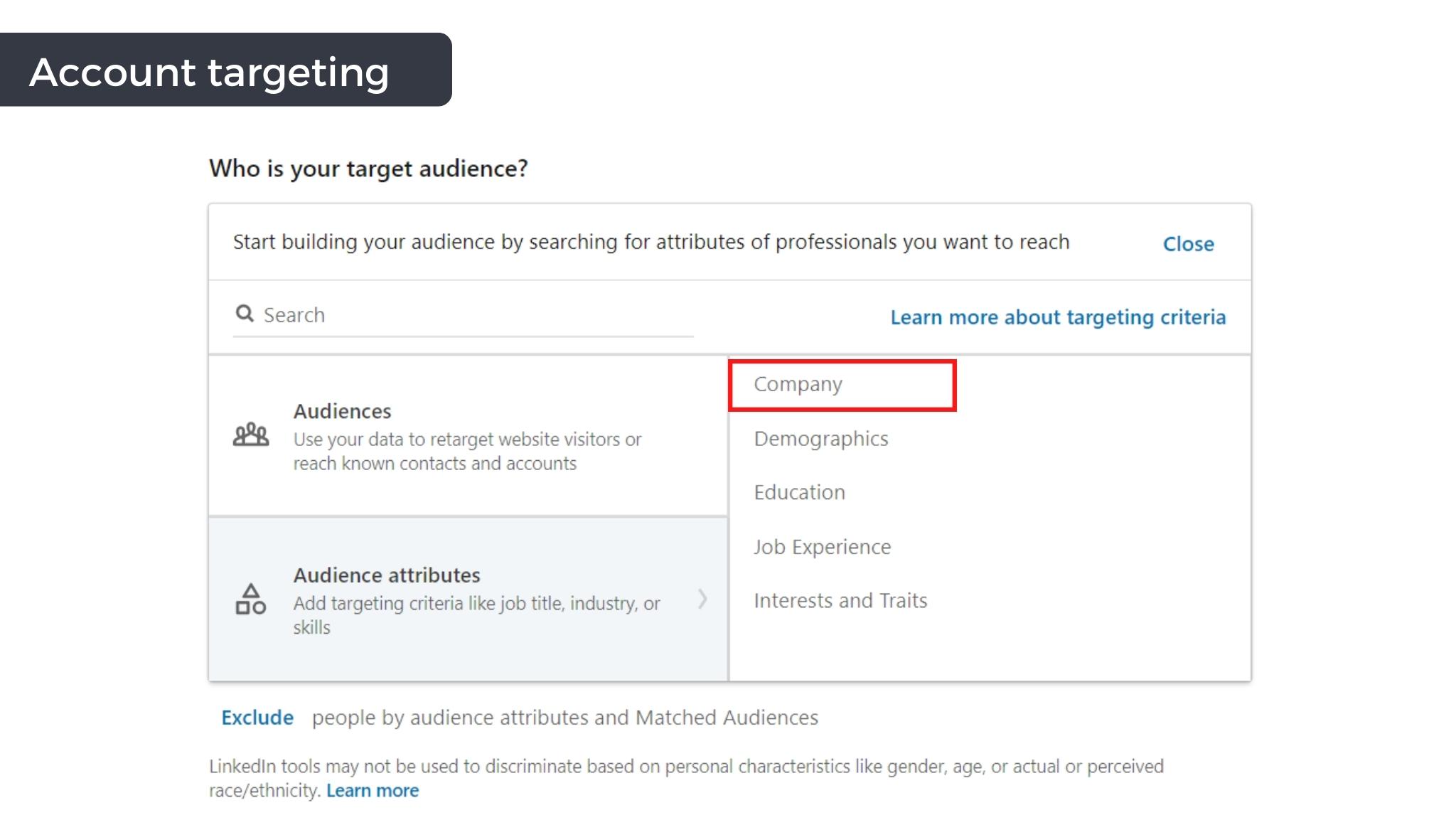
It runs Account-Based Marketing (ABM) campaigns by matching your target companies against 13 million LinkedIn pages on LinkedIn.
LinkedIn account targeting provides 7 options to target your audiences by company name, company industry, company size, company connections, company followers, company growth rate, and company category.
For example, you can upload a CSV file of the company (names/size/industry/category/growth rate) you want to target. LinkedIn will match your list with nearly 1300 company names in its database. If LinkedIn finds a match then you can target that company rather than targeting an individual. It provides you wider net to deepen engagement.
Here are a few tips for using account targeting:
-
- Reach out to the top influencers who make buying decisions at your target accounts.
- Drive more conversions by guiding decision-makers along their buying journey and generating more qualified leads.
- Upload a list of at least 1000 companies for better match rates.
- Avoid Hyper Targeting which can limit the delivery of the campaign.
Step-by-step set-up process for account targeting:
- Firstly, create an account list as a single column. One account per row inserting company names, industry, website, company country, etc. Save this list as a CSV file.
- Next, set up company or account targeting for LinkedIn ads
- On the audience creation page in the campaign manager, click on the create an audience tab, choose a match based on a list of accounts, upload your file and click the next button.
The matched audience list will become available after 48 hours for targeting.
- Lookalike targeting
Lookalike audiences allow you to reach new professional audiences similar to your existing customers, website visitors, and target accounts.
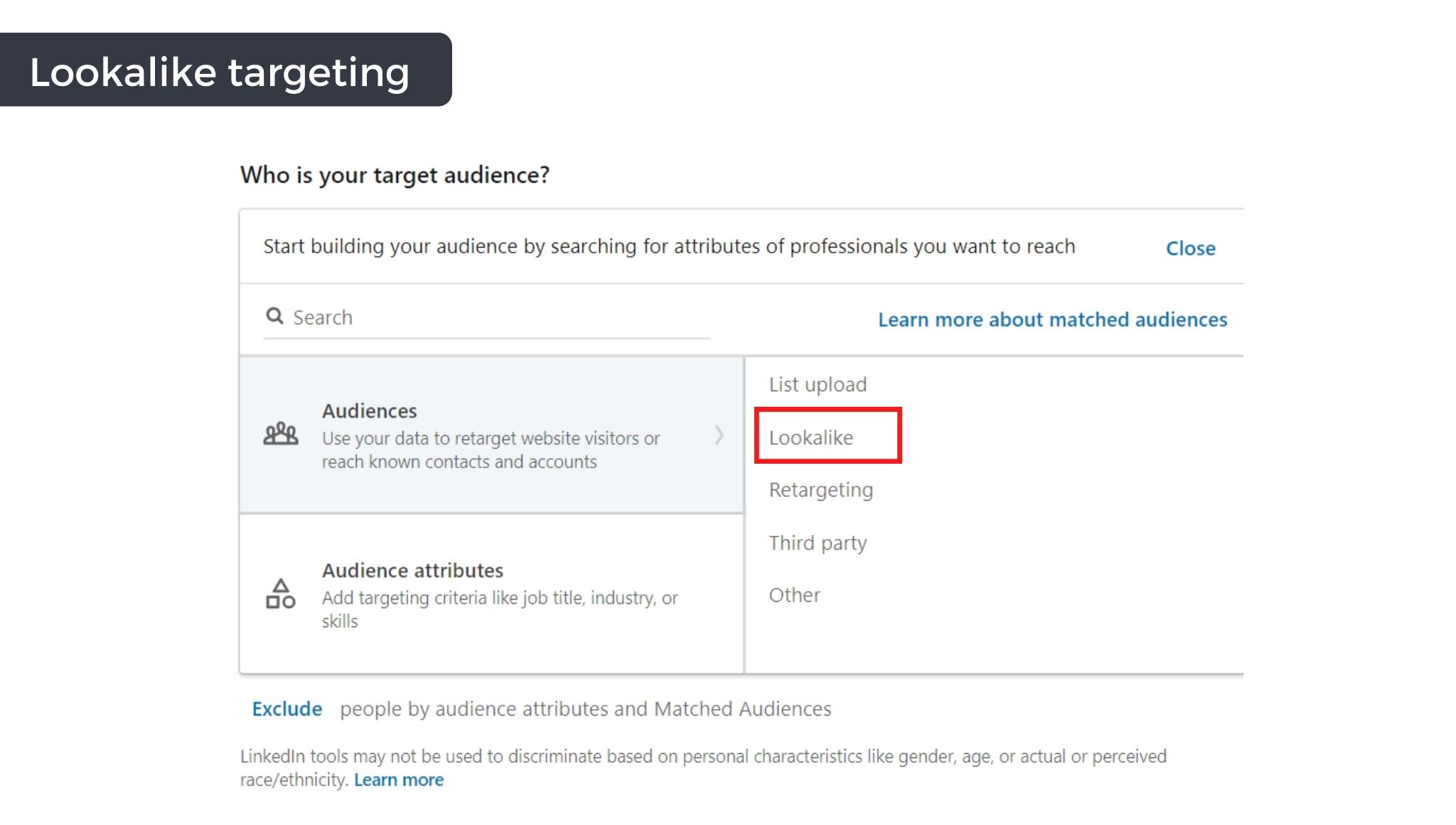
Here are a few tips for using Lookalike audiences:
-
- Perform tests to check the type of audience. For example, test the website with your CSV list of uploaded contacts and discover what works best.
- Review campaign demographics to discover the top engaging list & create a lookalike audience using the best performing list.
This is how LinkedIn Matched Audiences helps you to Generate and Retrieve quality leads.
Best ad targeting practices for generating leads
Now that you know about the LinkedIn matched audience concept, it is important to find out the best practices for quality lead generation. Even if you are an experienced digital marketing strategist LinkedIn works differently than other social media platforms.
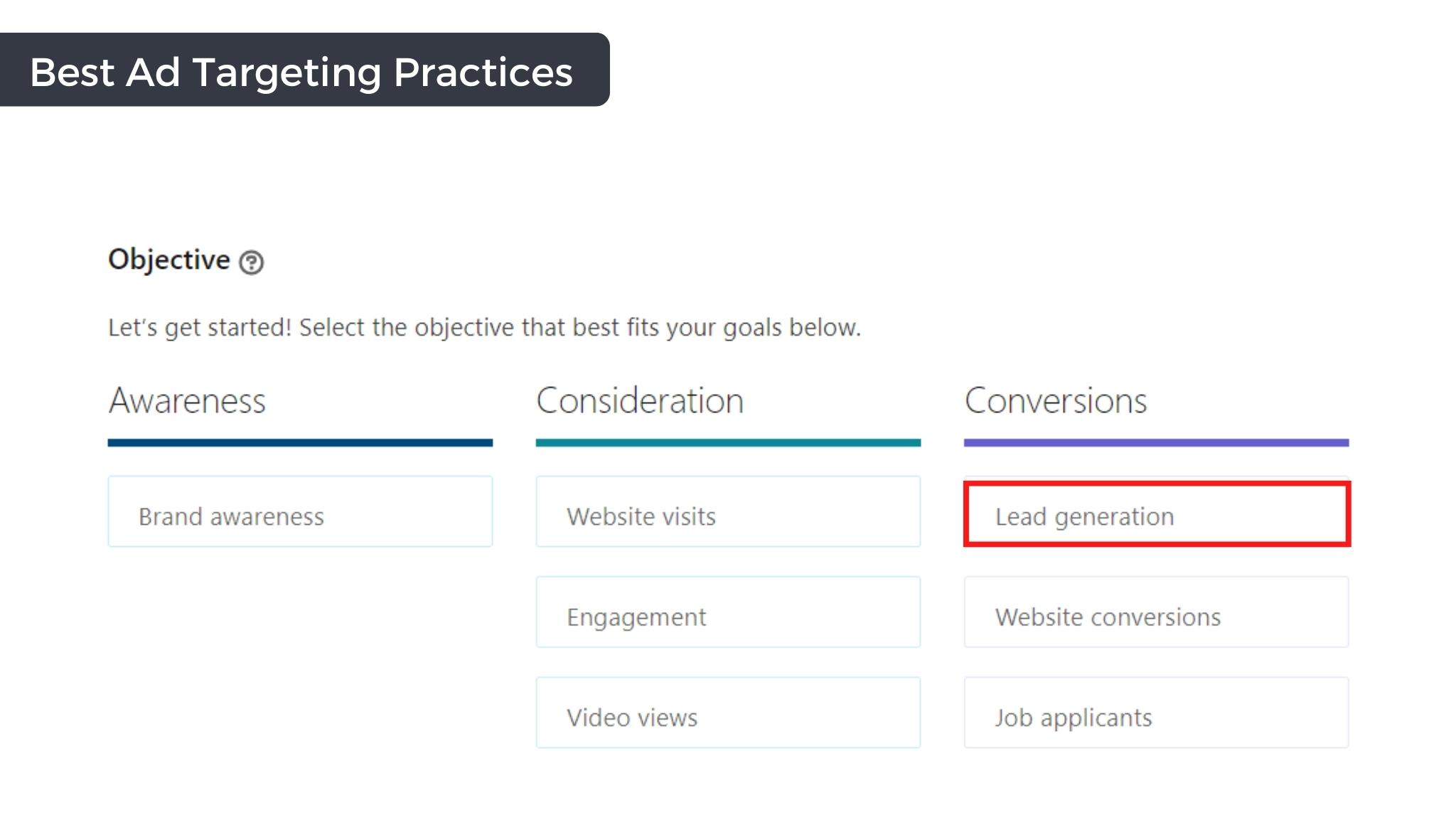
So, read on to find out best practices from LinkedIn’s professional ad targeting capabilities for generating leads.
1. Location
Firstly, identify where you would like to reach LinkedIn users. Location is a mandatory targeting field. You can specify a city, metropolitan area, state, or country.
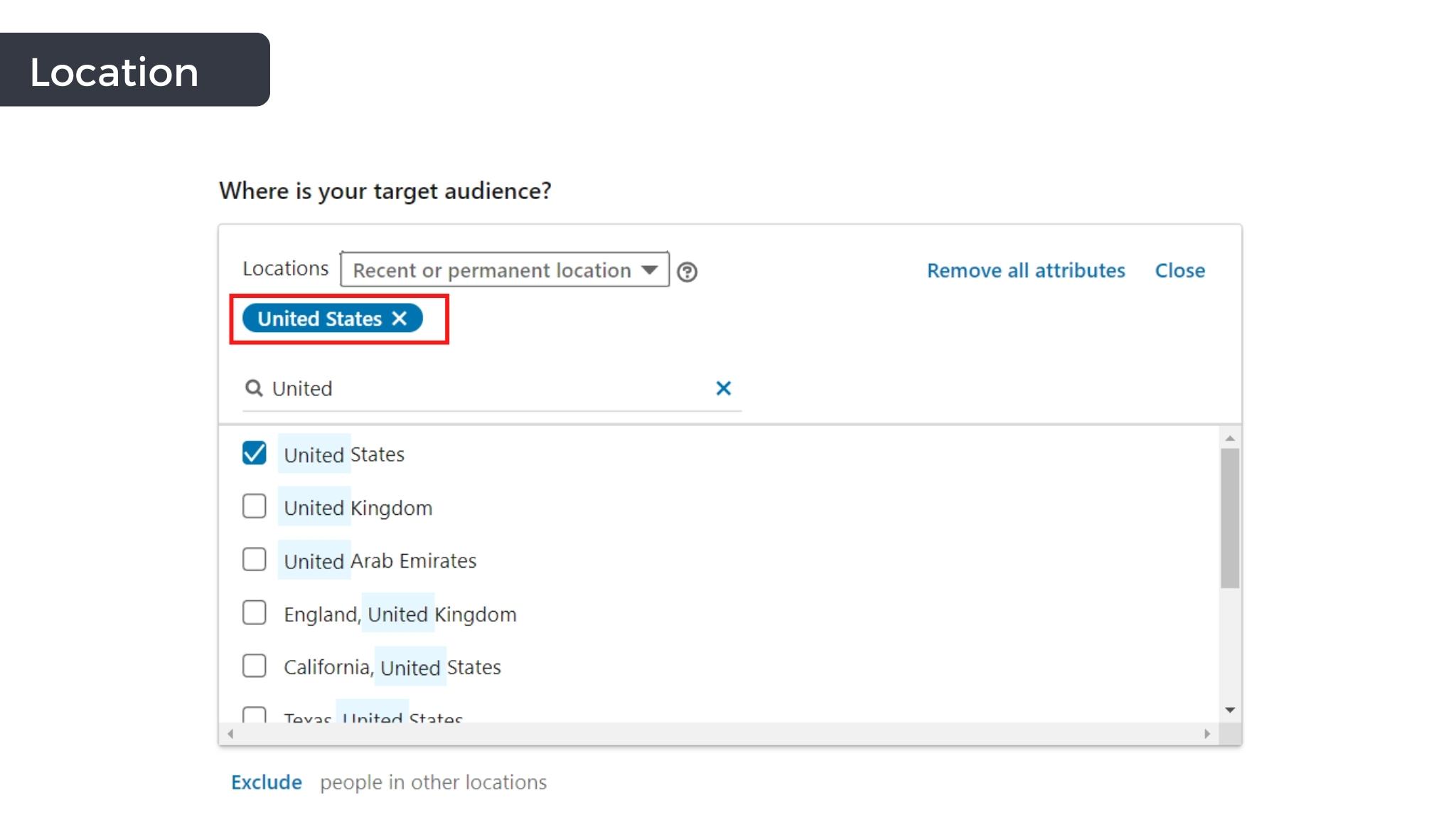
This facet is based on the location a LinkedIn member has used in his profile or their IP address.
2. Build your audience
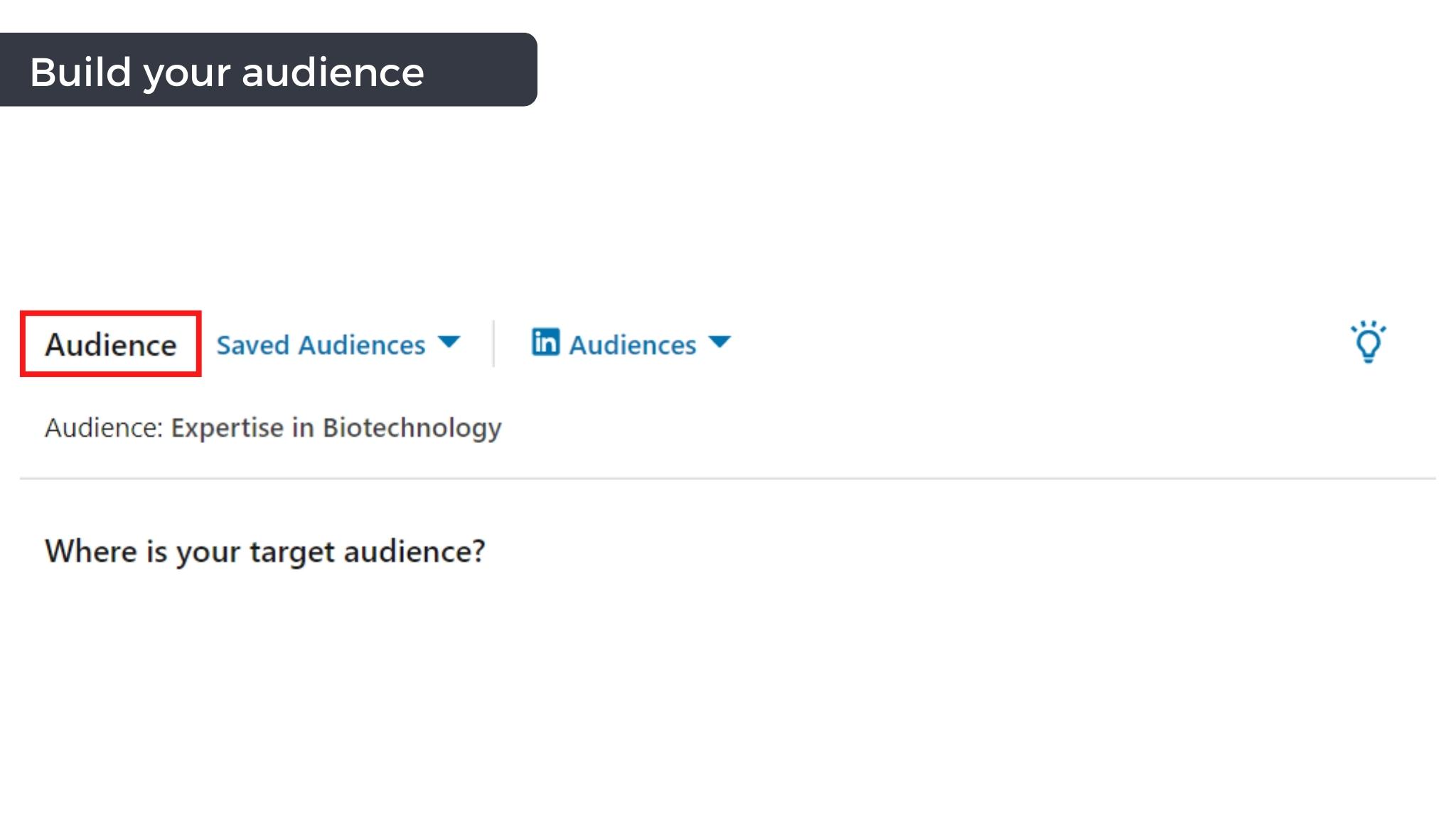
Select your audiences based on company, demographics, education, job experience, and interests.
3. Use audience template
Utilizing an audience template can help you save time during the campaign setup process.
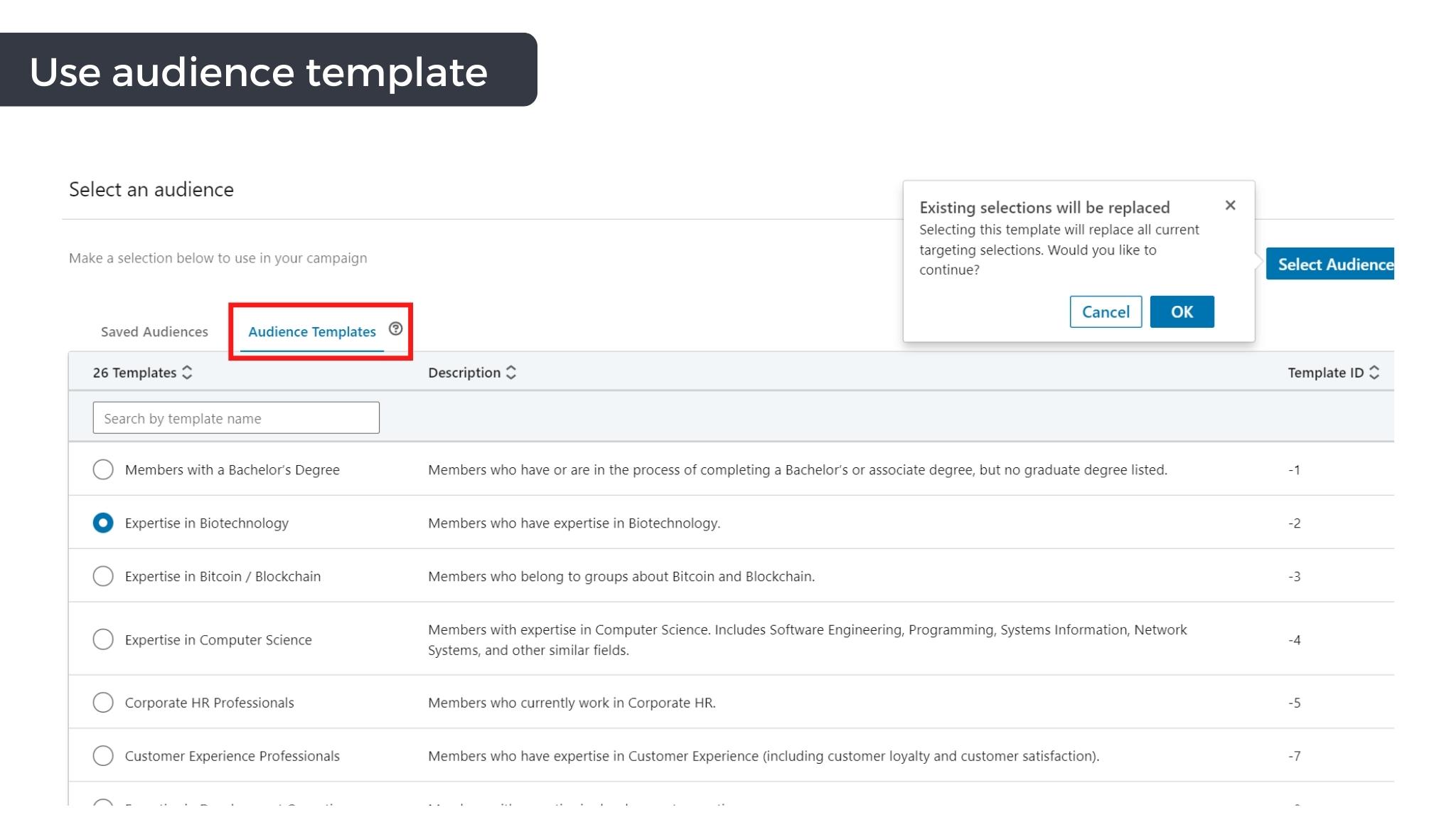
It helps you to create key audiences such as event planners, recent graduates, doctors, millennials, and more without manually selecting the right mix of targeting options.
4. Avoid hyper-targeting
At the beginning of the campaign, a limited scale may hurt the results. We suggest you start with a target audience of over 50,000 for sponsored content. This allows you to cast a wider net and find out which lead generation strategy works best for your business.
-
- Perform A/B test – Testing two similar campaigns with different targeting criteria, you can find out which campaign is most effective. For A/B testing you need to duplicate a campaign and make slight changes in the targeting parameters.
- Use custom targeting options – Custom targeting on LinkedIn allows you to find additional audiences similar to your target audience also known as a lookalike audience.
- Tailor your content to your audience – Share content that is more relevant to your audience’s interests.
- Gain insight with campaign demographics – Once your ad campaign has gathered enough data, check the demographics tab in the campaign manager and find out which professionals visited your ad and converted it into customers.
How to analyze campaign performance?
To measure the performance of a LinkedIn ad campaign, utilize a wide range of metrics that the campaign manager reports for every campaign you run.
- Choose your goals
Firstly, identify what is your goal. Is it building brand awareness (the upper funnel) or driving engagement (mid-funnel) or lead generation (bottom-funnel)?
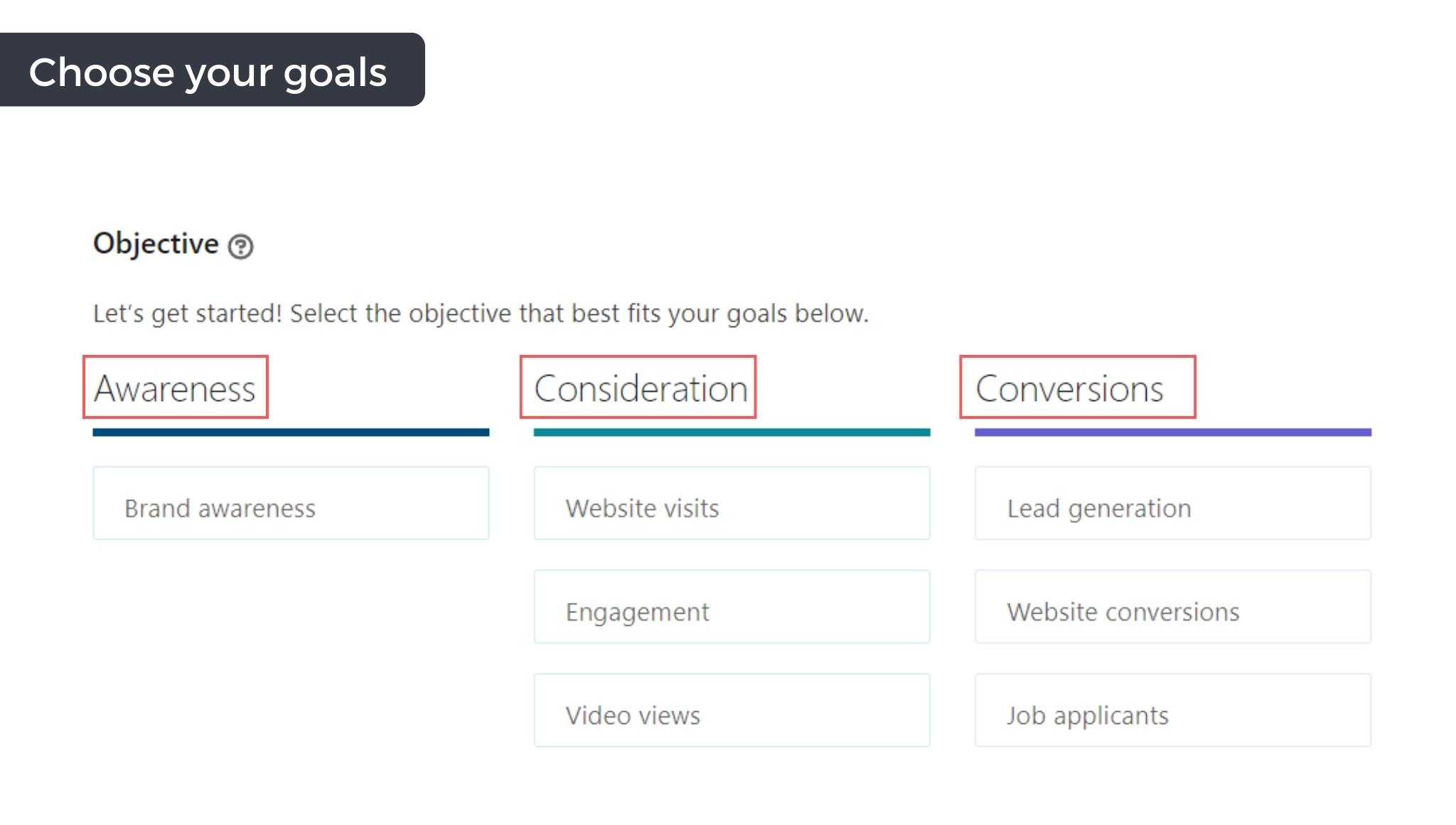
Select an objective from the funnels. Strong lead generation relies on a full-funnel content strategy.
- Set up conversion tracking and lead gen form
Conversion tracking will help you to measure the performance based on conversions, conversion rate, and cost per conversion.
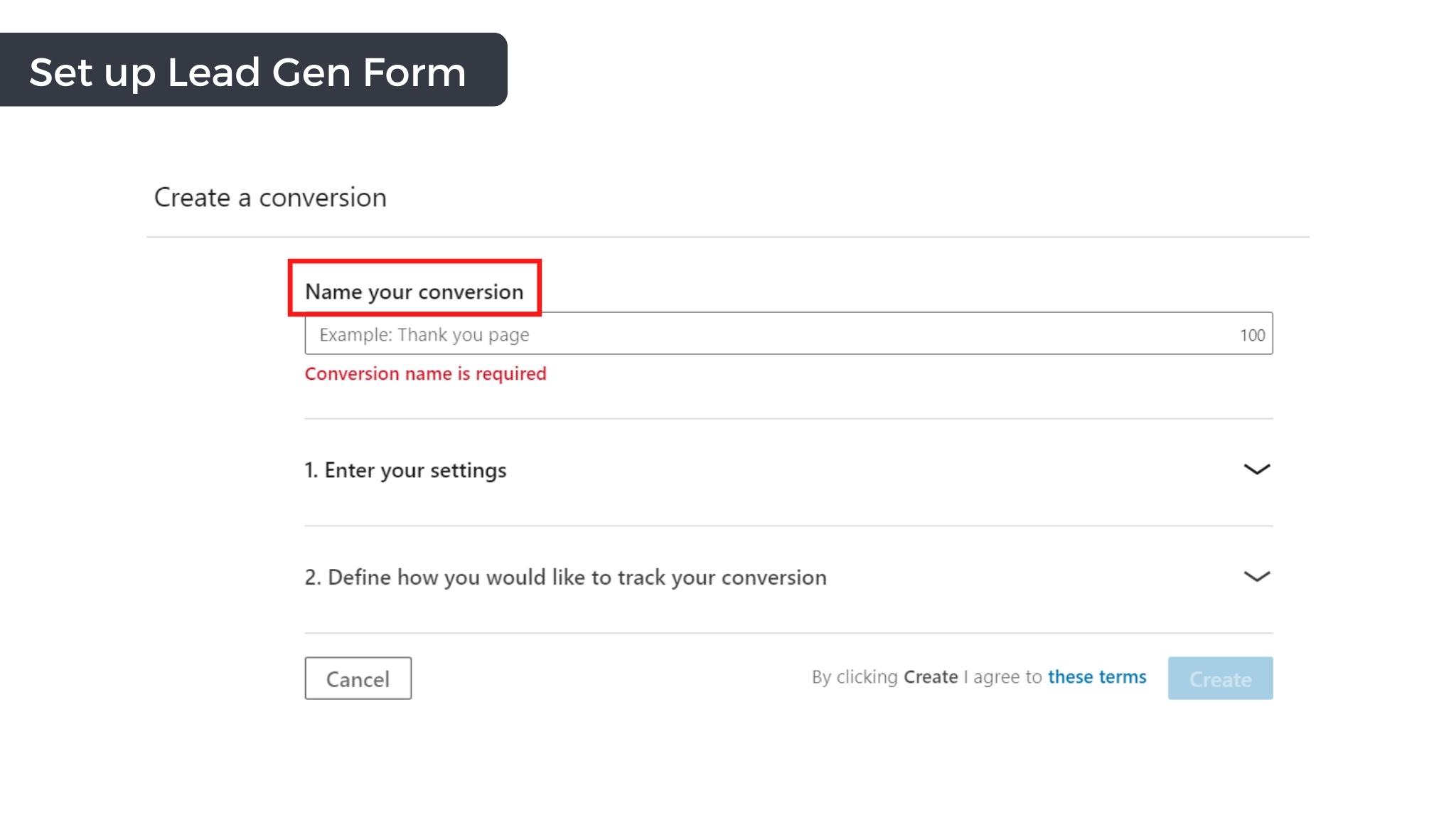
Lead gen forms allow you to measure the leads and cost per lead.
- Optimize with performance insight
By accessing campaign insights you can find out how your ads are performing. It will help you to make changes in budgets.
Final thoughts
LinkedIn is a potential B2B marketing giant especially if it is used to convert targeted leads. The matched audience is one of the best features provided by LinkedIn marketing solutions to nurture leads that are generated from LinkedIn ads.
Will you try LinkedIn-matched audiences for generating leads?
Let us know your thoughts in the comment section below.
If you have any questions regarding LinkedIn ads or you want to take your business to the next level, connect with us below and let’s get to work.
